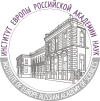We confirm adherence to all 16 Principles of Transparency and Best Practice in Scholarly Publishing.
Website
A journal's website, including the text that it contains, shall demonstrate that care has been taken to ensure high ethical and professional standards. It must not contain information that might mislead readers or authors, including any attempt to mimic another journal/publisher’s site. An ‘Aims & Scope’ statement should be included on the website and the readership clearly defined. There should be a statement on what a journal will consider for publication including authorship criteria (e.g., not considering multiple submissions, redundant publications) to be included. ISSNs should be clearly displayed (separate for print and electronic).
Name of journal
The Journal name shall be unique and not be one that is easily confused with another journal or that might mislead potential authors and readers about the Journal’s origin or association with other journals.
Peer review process
Journal content must be clearly marked as whether peer reviewed or not. Peer review is defined as obtaining advice on individual manuscripts from reviewers expert in the field who are not part of the journal’s editorial staff. This process, as well as any policies related to the journal’s peer review procedures, shall be clearly described on the journal website, including the method of peer review used. Journal websites should not guarantee manuscript acceptance or very short peer review times.
Ownership and management
Information about the ownership and/or management of a journal shall be clearly indicated on the journal’s website. Publishers shall not use organizational or journal names that would mislead potential authors and editors about the nature of the journal’s owner.
Governing body
Journals shall have editorial boards or other governing bodies whose members are recognized experts in the subject areas included within the journal’s scope. The full names and affiliations of the journal’s editorial board or other governing body shall be provided on the journal’s website.
Editorial team/contact information
Journals shall provide the full names and affiliations of the journal’s editors on the journal website as well as contact information for the editorial office, including a full address.
Copyright and Licensing
The policy for copyright shall be clearly stated in the author guidelines and the copyright holder named on all published articles. Likewise, licensing information shall be clearly described in guidelines on the website, and licensing terms shall be indicated on all published articles, both HTML and PDFs. If authors are allowed to publish under a Creative Commons license then any specific license requirements shall be noted. Any policies on posting of final accepted versions or published articles on third party repositories shall be clearly stated.
Author fees
Any fees or charges that are required for manuscript processing and/or publishing materials in the journal shall be clearly stated in a place that is easy for potential authors to find prior to submitting their manuscripts for review or explained to authors before they begin preparing their manuscript for submission. If no such fees are charged that should also be clearly stated.
Process for identification of and dealing with allegations of research misconduct
Publishers and editors shall take reasonable steps to identify and prevent the publication of papers where research misconduct has occurred, including plagiarism, citation manipulation, and data falsification/fabrication, among others. In no case shall a journal or its editors encourage such misconduct, or knowingly allow such misconduct to take place. In the event that a journal’s publisher or editors are made aware of any allegation of research misconduct relating to a published article in their journal, the publisher or editor shall follow COPE’s guidelines (or equivalent) in dealing with allegations.
Publication Ethics
A journal shall also have policies on publishing ethics. These should be clearly visible on its website, and should refer to: i) Journal policies on authorship and contributorship; ii) How the journal will handle complaints and appeals; iii) Journal policies on conflicts of interest / competing interests; iv) Journal policies on data sharing and reproducibility; v) Journal’s policy on ethical oversight; vi) Journal’s policy on intellectual property; and vii) Journal’s options for post-publication discussions and corrections.
Publishing schedule
The periodicity at which a journal publishes shall be clearly indicated.
Access
The way(s) in which the journal and individual articles are available to readers and whether there are associated subscription or pay per view fees shall be stated.
Archiving
A journal’s plan for electronic backup and preservation of access to the journal content (for example, access to main articles via CLOCKSS or PubMed Central) in the event a journal is no longer published shall be clearly indicated.
Revenue sources
Business models or revenue sources (e.g., author fees, subscriptions, advertising, reprints, institutional support, and organizational support) shall be clearly stated or otherwise evident on the journal’s website. Publishing fees or waiver status should not influence editorial decision making.
Advertising
Journals shall state their advertising policy if relevant, including what types of adverts will be considered, who makes decisions regarding accepting adverts and whether they are linked to content or reader behaviour (online only) or are displayed at random. Advertisements should not be related in any way to editorial decision making and shall be kept separate from the published content.
Direct marketing
Any direct marketing activities, including solicitation of manuscripts that are conducted on behalf of the journal, shall be appropriate, well targeted, and unobtrusive. Information provided about the publisher or journal is expected to be truthful and not misleading for readers or authors.


